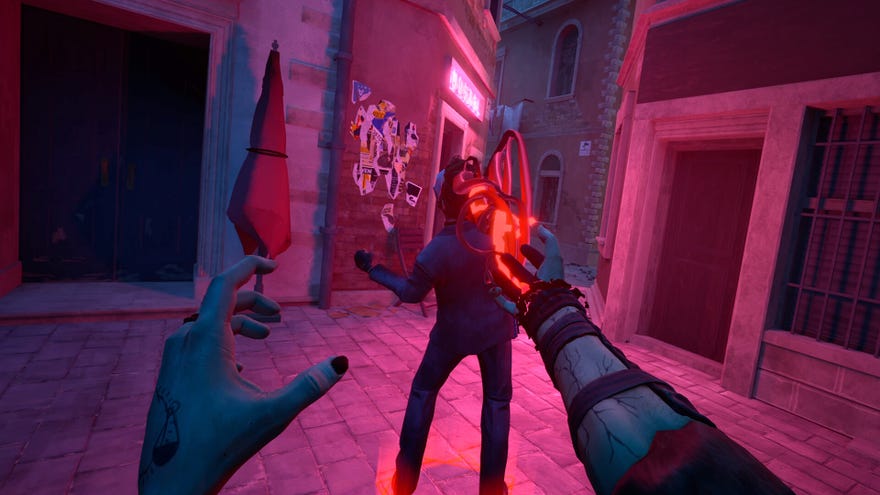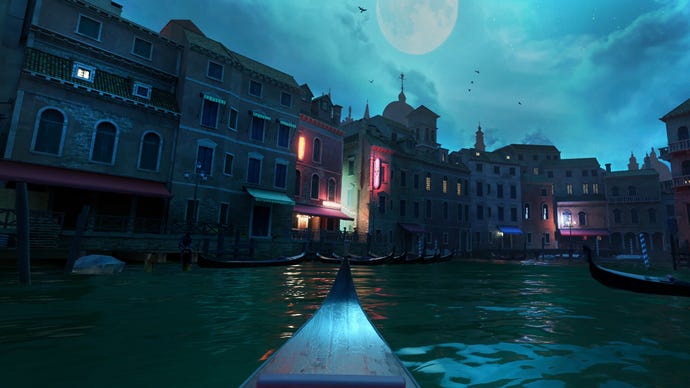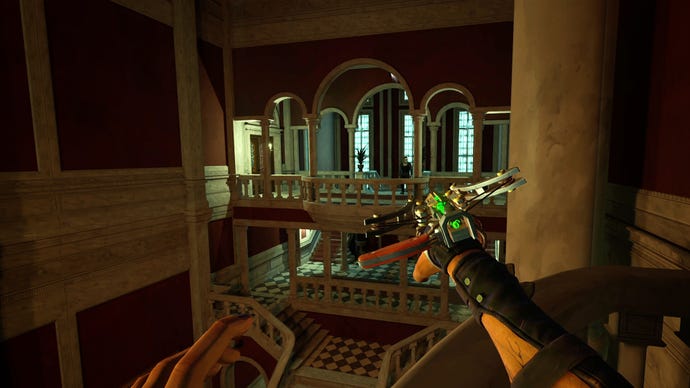HomeFeatures
A bloody mess
Image credit:Fast Travel Games
Image credit:Fast Travel Games

I’m beginning to think we should bury Vampire: The Masquerade back in the forsaken graveyard where it was originally dug up, or at least banish the toothy reprobate back to its pen & paper castle. I don’t know how White Wolf’s RPG is viewed in the land of table tops these days, but here in computerville it has delivered exactlyone good video gamein the last 25 years (and don’t come gibbering to me about 2022’sSwansong, it wasn’t fit to polish Bloodlines' fangs). Sure,Bloodlines 2might prove a winner, but given years of delays and a developer change, I’ll believe it when I see it.
Which brings us to Vampire: The Masquerade - Justice, the beleaguered series' first prowl through the rain-slick streets of VR. In theory, this should be exactly my cup of haemoglobin; a gothic, linear stealth game where you use your vampire powers to sneak across the rooftops of Venice. In its mechanics and design, Justice aspires to be a cut down version ofDishonored. Unfortunately, it’s in the cutting down where most of its problems arise. It’s too cramped, too basic, and too fuzzy around the edges, and the whole experience ends up being a bit mid.
The setup is straightforward enough. You play a vampire rather unsubtly called Justice, who can be played with masculine or feminine voice and body type. Justice travels to Venice in search of a mysterious relic following the murder of their sire. Naturally, being a Masquerade game, the story gets considerably murkier as it goes along, although whether that’s the same as getting more interesting is up for debate. Much of the narrative is delivered in fat dollops of exposition while you stand around sweating into your headset, which does rather distract from the events being moodily unfurled.
It opens strongly though. You arrive at night, via gondola, to track down your initial contact in Venice’s vampiric underworld, a Nosferatu named Pietro. Your first glimpse of Venice is wonderfully atmospheric, with its baroque tenements looming above you as your gondola glides in the water, the moon shading the city in the hues of a muggy summer night. The game never quite looks this good again, sadly. But it maintains those darkly warm colours throughout, lifting many of the simpler environments later in the game.
While Venice’s sultry nights may look inviting, Justice is about as welcome in the city as one of those massive, obnoxious cruise ships that damage the local architecture. The streets swarm with the goons of the local vampire coterie, and they’re armed to the teeth. Justice themself belongs to the Banu Haqim clan, who are known more for subterfuge than strength. This means directly attacking enemies is rarely a good idea, so you’re better off either avoiding them, or ambushing them from behind.
Image credit:Fast Travel Games

The building blocks for a fun, predatory stealth game are here, and they do sometimes come together. Lurking upon rooftops as you study enemy patrol routes, putting together a quick sequence of blinks to slip through the gaps, can be satisfying. And while the environments are quite constrained, the game tries to ensure most areas have multiple avenues of attack.
Image credit:Fast Travel Games

Indeed, the physics are one of Justice’s big immersion breakers. I know I’m supposed to be a powerful vampire (although given Justice’s fragility in combat, I’d argue the game is inconsistent on this point). But when you attack an enemy, it feels less like you’re strong, and more like your foes are filled with helium. It reminds me of Bloodlines' own distinctly floppy melee combat. But in that game’s defence, it’s twenty years old, a much broader experience and physics was a new technology at the time. Being a VR game, physical interaction is one of Justice’s main selling points, and it just doesn’t feel particularly good beneath the fingers. It’s floaty, fiddly and imprecise when it needs to be slick and reactive.
In the end, Vampire: The Masquerade - Justice simply made me want to play Dishonored. Everything in it is a lesser version of something done better in Arkane’s masterpiece, and the fact it’s a VR game doesn’t compensate for the shortcomings in the broader design. Masquerade obsessives might find some value in the story or the setting, but coming to it as a stealth fan, I found Justice to be sorely wanting.